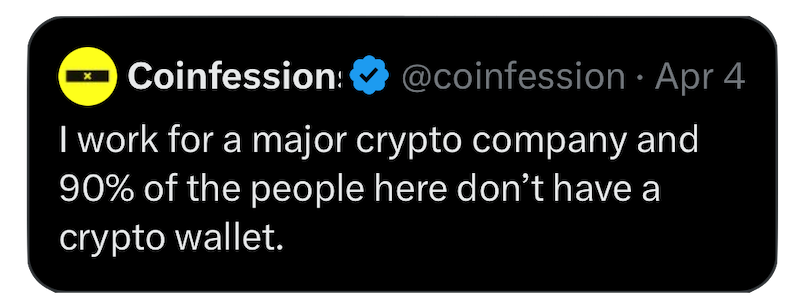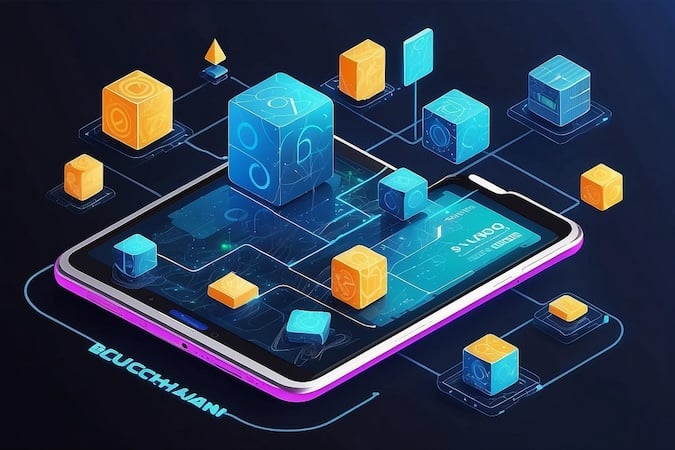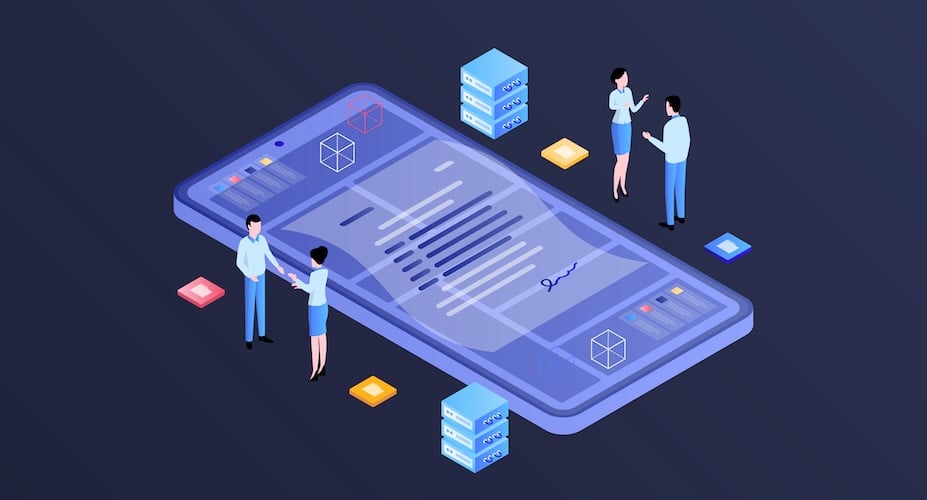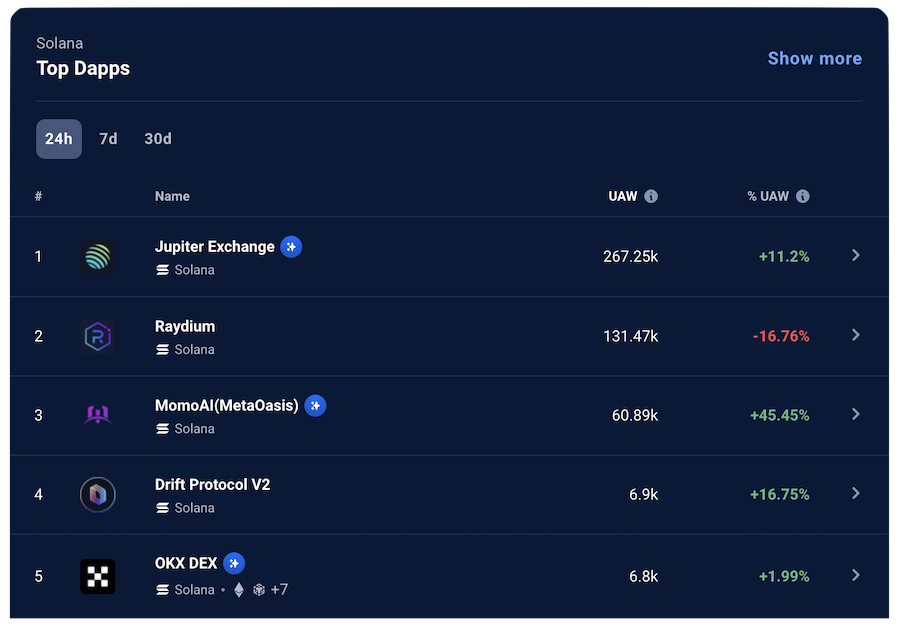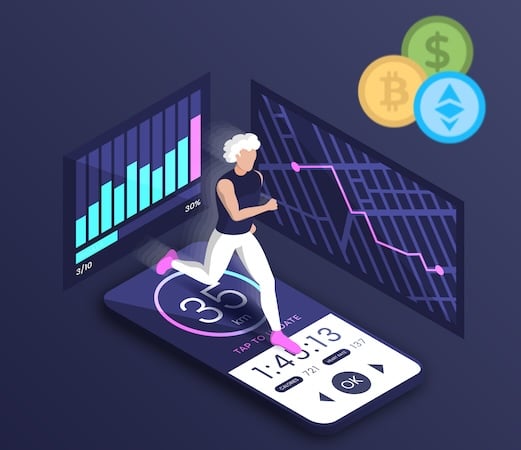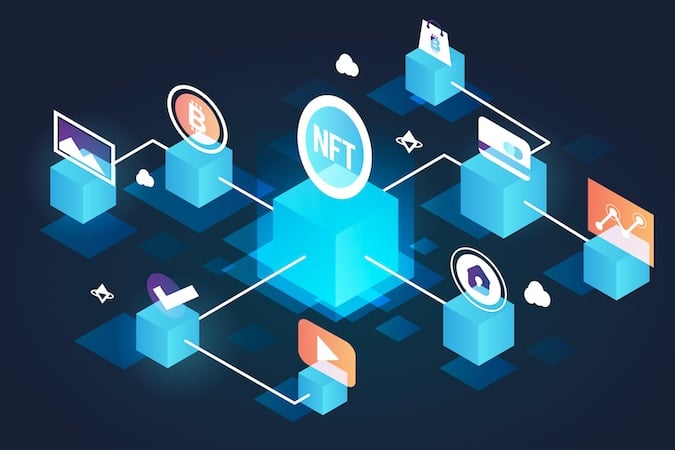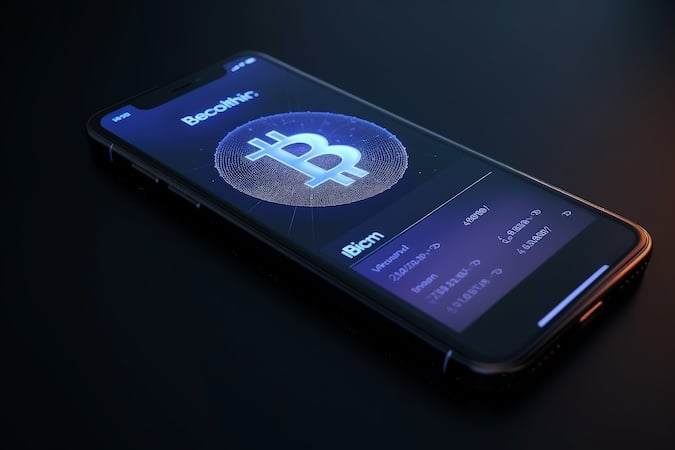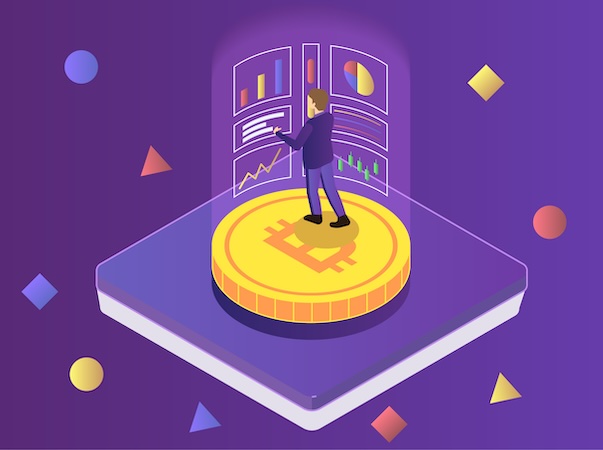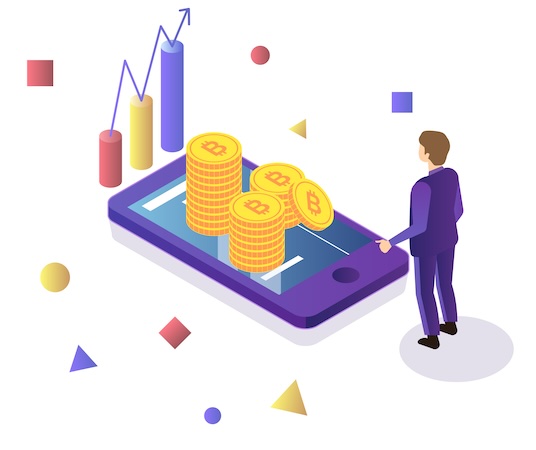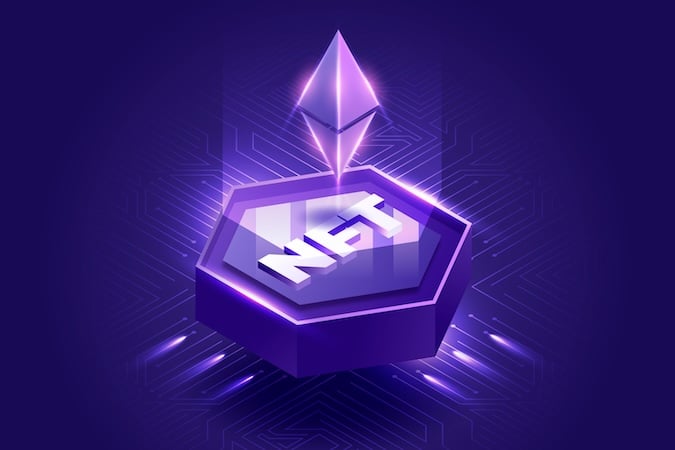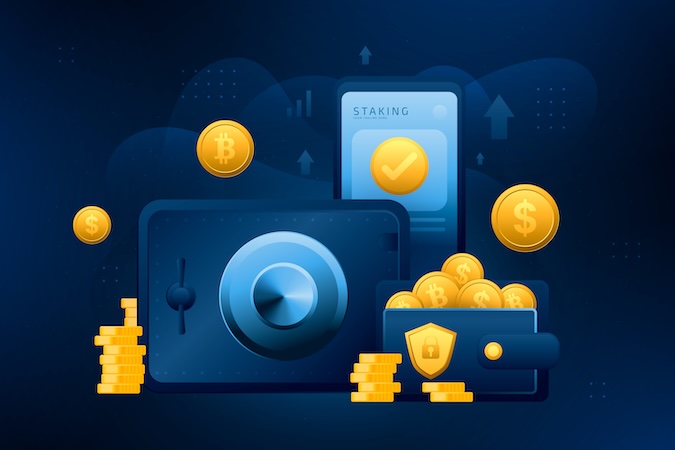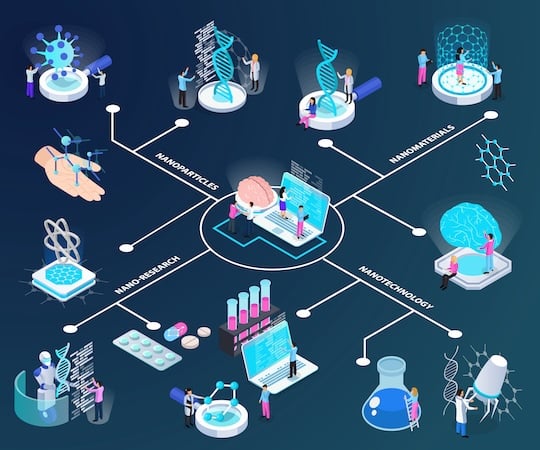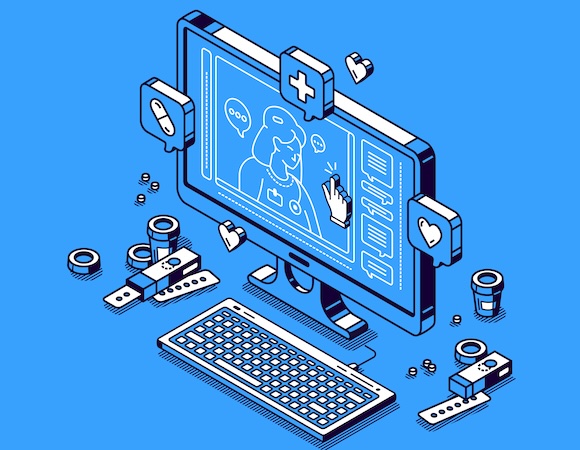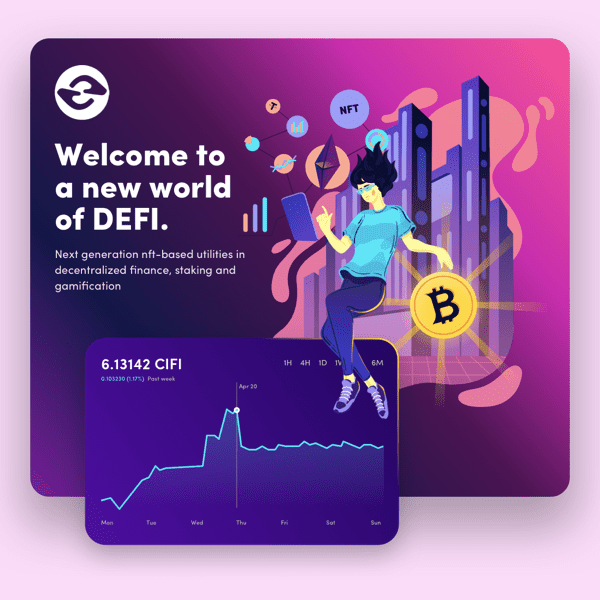As we edge closer to a thrilling bull market for altcoins, predicted to surge post-April 2024’s Bitcoin halving, the stage is perfectly set for innovation. With Bitcoin smashing records above $72,000 and an Ethereum ETF on the horizon, the spotlight is firmly on web3 app development.
This burgeoning field offers a golden opportunity to craft products that not only capitalize on the current market euphoria but also deliver enduring value in the unpredictable crypto landscape. In this guide, we delve into the essentials of web3 application development, ensuring your creations achieve rapid product-market fit and sustain relevance for years to come.
Remember, diving into the world of web3 defi apps now is a strategic move, as for many, the realm of crypto remains largely unexplored. Especially if you are looking to build a serious defi product for healthcare, education, or fintech that adds real value beyond the speculative nature of crypto, there’s no better time than now to embark on this journey.
Top Takeaways:
- Diving into the world of Web3 offers a unique opportunity to revolutionize how we interact online, emphasizing user control and decentralized operations. To successfully build a web3 app, entrepreneurs must grasp foundational concepts like crypto wallets, smart contracts, and decentralized storage, ensuring their ventures thrive in this new digital landscape.
- Mastering how to make a web3 app involves more than just coding; it’s about creating a secure, user-centric platform. From ensuring decentralized architecture and transaction transparency to prioritizing security with smart contract audits and robust user authentication, every detail contributes to the app’s success in the vibrant web3 ecosystem.
- In the transformative world of web3 app development, its applications in healthcare and fintech stand out, offering groundbreaking solutions that promise to overhaul traditional systems. From revolutionizing patient care and medical records management with decentralized science (DeSci) to enhancing financial services accessibility, web3 technology is setting new standards for innovation, security, and user empowerment. Whether it’s empowering patients to control their health data or democratizing finance, the key takeaway is clear: web3 app development is not just shaping the future; it’s redefining it, making industries more efficient, transparent, and user-centric.
Table of Contents:
1. What Is Web3 App and How Does it Work?
2. Emerging Trends in Web3 Application Development
3. Features for Developing a Web3 Application
4. Choosing the Right Tech Stack for Web3 Application Development
5. How to Build a Web3 App in 10 Steps
- Step 1: Define Your App Idea
- Step 2: Grow Audience
- Step 3: Design the Prototype
- Step 4: Write Code
- Step 5: Test
- Step 6: Run Security Audits
- Step 7: Deploy to Blockchain/s
- Step 8: Maintain and Update
- Step 9: Track App Performance
- Step 10: Plan for Upgrades
6. Overcoming Challenges in Web3 Application Development
7. What Is the Cost to Develop a Web3 Mobile App?
8. Specialized Applications of Web3 Technology
9. How Topflight Can Elevate Your Web3 Project
What Is Web3 App and How Does it Work?
Welcome to the era of Web3, a revolutionary phase in the digital world that promises to redefine our online interactions. As we embark on this journey, understanding the intricacies of building web3 apps becomes paramount for entrepreneurs aiming to leverage the decentralized web. But what exactly does Web3 entail, and why is it causing such a stir across industries?
Understanding Web3: Concepts and Evolution
At its core, Web3 represents the third generation of internet services, where applications run on decentralized networks or blockchains. This evolution from user-generated content in Web2 to a blockchain-based ecosystem in Web3 marks a significant shift toward a more open, trustless, and permissionless internet. The implications? A digital realm where users have unprecedented control over their data, identity, and transactions.
To navigate this promising yet complex landscape, it’s essential to familiarize yourself with some foundational concepts. Here’s the bare minimum your customers need to master to operate effectively in the Web3 world:
Crypto Wallet: a gateway to the decentralized web. A crypto wallet doesn’t just store cryptocurrency; it also serves as a digital identity, enabling interactions with various decentralized applications (DApps) without compromising personal information.
Related: Crypto Wallet App Development
Smart Contracts: If traditional contracts are penned agreements enforceable by law, smart contracts are their self-executing digital counterparts running on the blockchain. Written in code, these contracts automatically execute transactions or actions when predetermined conditions are met. They’re the backbone of many DApps, powering everything from DEXs to automated royalty payments for artists.
Decentralized Storage: While cloud storage services rely on centralized data centers, decentralized storage solutions like IPFS (InterPlanetary File System) or Filecoin distribute data across a global network of nodes (connected computers carrying blockchain code and verifying transactions).
More on Web 2.0 vs Web 3.0 in our dedicated blog.
In the realm of decentralized finance, staying ahead means constantly innovating. Ready to develop a DeFi application that could redefine the market? Our guide offers the expert knowledge and industry secrets you need to make an impact.
Most Popular Types of Web3 Apps
From decentralized finance (DeFi) platforms to non-fungible token (NFT) marketplaces, the types of Web3 apps are as diverse as they are innovative. Each application serves different sectors but shares the common goal of utilizing blockchain technology to offer transparent, secure, and user-centric experiences.
Here’s a list of the most popular types of Web3 applications:
- DEX (Decentralized Exchanges): Platforms allowing users to trade cryptocurrencies bypassing traditional centralized exchanges.
- Lending Platforms: Facilitate borrowing and lending of digital assets, using smart contracts to manage loans automatically.
- Staking and Restaking Platforms: Enable users to lock up their tokens in return for rewards, supporting network security and operations.
- NFT Marketplaces: Online platforms where creators and collectors buy, sell, or trade non-fungible tokens, unique digital assets representing ownership or proof of authenticity.
- Cross-Chain Bridges: Solutions that enable the transfer of assets and information between different blockchain networks, enhancing interoperability.
- Wallets with Add-on Features: These wallets are not just for storing cryptocurrency; they offer additional services like swapping tokens or interacting with DApps directly.
To learn more about how to create e-wallet app, visit our dedicated article which provides valuable tips and detailed information.
- Crypto Games: Blockchain-based games where players truly own in-game assets like NFTs and can earn cryptocurrency through gameplay.
- Portfolio Trackers: Tools that allow investors to monitor and manage their digital asset portfolios across various platforms.
- Mining Platforms: These are services that enable users to mine cryptocurrencies by contributing their computing power or tokens to validate transactions.
- Betting Apps: Decentralized platforms that offer betting on events or outcomes using cryptocurrency, often with greater transparency and fairness.
- Asset Management DApps: These are applications that provide tools for managing and optimizing digital asset investments.
- DAO (Decentralized Autonomous Organizations): Member-owned communities without centralized leadership, governed entirely by smart contracts.
- Liquidity Protocols: Facilitate the decentralized exchange of tokens by creating liquidity pools that users can trade against.
- Crypto Development Tools: Platforms and services that assist developers in building, deploying, and managing blockchain applications.
- Crowdfunding Platforms: Enable projects to raise funds directly from supporters in a decentralized manner, offering tokens or rewards in return.
Related: NFT Marketplace Development
Real-World Examples of Transformative Web3 Applications
If you rank DeFi apps on DappRadat by TVL (total value locked), the top solutions will all be DEXs, lending protocols, and staking platforms. Here are a few examples:
UniSwap: A leading decentralized exchange that uses liquidity pools rather than traditional market matching, allowing users to swap ERC-20 tokens directly from their wallets.
Balancer: An automated portfolio manager, liquidity provider, and price sensor, Balancer lets users create or add liquidity to customizable pools and earn trading fees.
Solend: A decentralized lending and borrowing platform on the Solana blockchain, offering fast transactions and low fees, making DeFi more accessible and efficient.
A more down-to-earth example of a web3 application would be a wellness app like Sweatcoin that pays in crypto for tracking steps walked. What’s important is that the typical end user doesn’t have to know that the Sweatcoin app on their smartphone is a web3 application. To them, it’s a regular fitness/wellness app with rewards — just as long as it lets them cash out seamlessly. Got an idea for a web3 app in your niche? Get in touch.
Check out our move-to-earn app development guide
Emerging Trends in Web3 Application Development
In the fast-paced world of web3 app development, staying ahead of emerging trends is not just an advantage—it’s a necessity. As we delve into the latest movements shaping the landscape, it becomes clear that the future of decentralized applications is bright, diverse, and ripe with opportunity. Here’s what’s on the horizon for entrepreneurs and developers alike.
The Rise of Real-World Assets (RWA) in Web3
The tokenization of real-world assets (RWAs) is revolutionizing how we perceive value and ownership in the digital age. By representing physical assets like real estate, art, or commodities on the blockchain, RWAs unlock liquidity and make these markets more accessible to a global audience. This trend not only broadens the scope of web3 app development but also introduces new considerations for asset verification and legal compliance.
Innovations in Re-staking Platforms
Re-staking revolutionizes traditional staking by allowing validators to redeploy staked assets across multiple protocols, enhancing rewards and network security. Introduced by EigenLabs with EigenLayer, it extends the security of large networks to services like oracle networks and blockchain bridges. As a result, this innovation offers validators diversified reward opportunities while concurrently bolstering various platforms’ security.
Blockchain Gaming and NFT Marketplaces
The intersection of blockchain gaming and NFTs is creating unprecedented opportunities for developers. Beyond simply creating games, there’s a burgeoning ecosystem for platforms that facilitate the trade, lease, or collateralization of in-game assets. This trend emphasizes the need for seamless integration between gaming environments and marketplaces, enhancing user experience and opening new revenue channels.
Regulatory Landscape: Navigating U.S. SEC Guidelines for DeFi Projects
Regulatory clarity is gradually emerging, with the U.S. Securities and Exchange Commission (SEC) providing guidelines that shape the development of DeFi projects. Understanding these regulations is crucial for ensuring compliance and fostering trust among users, making it a key consideration in web3 app development.
The Surge of DEXs and AI Integration
Decentralized exchanges (DEXs) continue to gain traction, offering users autonomy over their trading activities. The integration of AI technologies for predictive analytics, automated trading, and enhanced security measures is setting new standards for DEX functionality and user experience.
For entrepreneurs diving into web3 application development, these trends are not just passing fads—they’re signposts pointing towards the future of decentralized technology. By aligning with these developments, you ensure your project not only meets current demands but also anticipates the needs of tomorrow’s digital landscape.
Features for Developing a Web3 Application
Embarking on the journey to create a web3 app requires a well-thought-out foundation. Below, we explore the essential features and security practices that are non-negotiable for crafting a resilient and user-centric web3 application.
Building Blocks for a Successful Web3 Application
Decentralized Architecture: Ensure your app operates on a peer-to-peer network to eliminate single points of failure and promote data integrity.
Transparency: Implement mechanisms that allow users to verify transactions and data without compromising privacy.
Immutability: Utilize blockchain technology to ensure that once data is recorded, it cannot be altered, providing trust in the system’s records.
Tokenization: Convert assets into digital tokens to simplify transactions, enhance liquidity, and open new investment avenues.
Open Source: Consider making your project’s code publicly available to benefit from community feedback, improvements, and trust-building.
Community Governance: Empower users with decision-making capabilities to foster a sense of ownership and alignment with the app’s evolution.
Interoperability: Design your application to seamlessly interact with other dApps and blockchains, enhancing user experience and utility.
Security Considerations and Best Practices
Smart Contract Audits: Regularly audit your contracts to identify and rectify vulnerabilities before they can be exploited.
User Authentication: Implement robust authentication mechanisms, such as multi-factor authentication (MFA) or integration with cold (hardware) crypto wallets, to protect user accounts.
Data Encryption: Encrypt sensitive data both in transit and at rest to safeguard against unauthorized access.
Regular Updates: Stay abreast of security advancements and update your application regularly to mitigate emerging threats.
Creating a web3 app is an ambitious endeavor that demands attention to these foundational elements to ensure success in the dynamic and evolving web3 landscape. Check out our blog where we discuss how to make a smart contract — an essential piece of any web3 application.
Choosing the Right Tech Stack for Web3 Application Development
When you’re set to develop a web3 app, understanding that your choice of technology will vary significantly depending on the blockchain platform is crucial. Each blockchain has its preferred programming languages; for instance, Ethereum primarily uses Solidity, while other blockchains might lean towards different languages. This choice forms the backbone of your app’s back-end development, for example:
- Rust (for Solana dapp development)
- Rust, C, C++ (for Arbitrum dapps)
- Go and Solidity (for Avalanche)
However, when shifting focus to the user-facing front end of web3 mobile app development, familiar technologies come into play. Tools like React Native, Flutter for cross-platform applications, or Swift and Kotlin for native iOS and Android apps or React/Node for web solutions, respectively, are stalwarts in creating an engaging user experience.
Related: How to Develop a Blockchain App
Moreover, integrating your application with the blockchain requires specialized libraries, such as web3.js or ethers.js, tailored to web or mobile platforms. These libraries act as a bridge, enabling your app to interact seamlessly with blockchain networks, ensuring that your application not only looks great but functions flawlessly within the web3 ecosystem.
Other crypto development tools to consider when creating a web3 dapp include:
- Oracles: The crystal balls of the blockchain world, oracles provide smart contracts with access to external data, which is vital for executing contracts based on real-world events. Imagine a health insurance app automatically processing claims based on hospital records or a fintech solution adjusting loan terms based on market conditions.
- Crypto Development Frameworks: Tools like Truffle or Hardhat are akin to Swiss Army knives for developers, offering a suite of functionalities to compile, deploy, test, and debug your dapps. They streamline the development process, making it more efficient and less prone to errors.
- Test Blockchain Networks: Before unleashing your app into the wild, it’s wise to take it for a test drive. Networks like Rinkeby or Ropsten provide a sandbox environment, allowing you to simulate transactions without the risk (or cost) associated with the main network.
How to Build a Web3 App in 10 Steps
Embarking on the adventure to develop a web3.0 mobile app is not just about coding skills; it’s about bringing together a cross-discipline team that thrives on innovation and understands the intricacies of blockchain technology.
This team should not only be adept at programming smart contracts using the native tech stack appropriate for your selected blockchain(s) but also excel in designing, verifying the product-market fit vision, testing, and developing the UI frontends (whether on the web or mobile). The synergy between these skills is crucial for the success of your project.
Here’s a concise summary of the steps to build a Web3 app, covering everything from planning to post-launch strategies:
| Step | Description |
|---|---|
| 1. Define Your Idea | Outline your app’s concept, including blockchain protocol, MVP features, tech stack, and target audience. |
| 2. Grow Your Audience | Engage your target audience early through a white paper, marketing website, and social media. |
| 3. Design a Prototype | Create and test prototypes for key app screens, refining the UX/UI based on user feedback. |
| 4. Write Code | Develop smart contracts and front-end features using the selected tech stack and Web3 frameworks. |
| 5. Test Thoroughly | Test smart contracts on testnets and validate the front-end using automated tools. |
| 6. Run Security Audits | Conduct security audits to detect and fix vulnerabilities in smart contracts. |
| 7. Deploy | Deploy smart contracts to the blockchain and set up the cloud environment for your app. |
| 8. Maintain and Update | Monitor performance, release updates, and educate users for improved experience. |
| 9. Plan for Major Upgrades | Incorporate new features and upgrades based on user feedback and emerging technologies. |
Planning and Designing Your Web3 Application
Step 1. Define Your Idea
Start with an idea that not only inspires you but also promises to bring substantial value to your target audience (TA). This step involves several critical decisions:
- Selecting a Blockchain Protocol(s): Choose the one that aligns with your app’s requirements in terms of speed, security, and cost.
- Dapps Interaction: Identify which existing decentralized applications your solution will interact with.
- MVP Feature Set: Outline the minimum viable product features to solve your TA’s problems effectively.
- Tech Stack: Decide on the technology stack that will best serve both the crypto components and the user-friendly interfaces of your app.
- TA Profile: Understand your target audience’s needs deeply to tailor your solution precisely.
- Vendor Selection: Ideally, find a one-stop-shop like Topflight that is adept in both crypto development and creating engaging mobile and web app interfaces.
Step 2. Grow Your Audience
No need to wait till your app is ready: start marketing and evaluating your TA response as soon as you have some basics, like:
- White Paper: Write a detailed white paper explaining your product’s value proposition, technology, and potential impact.
- Marketing Website: Launch a simple yet compelling marketing website featuring a waitlist to gauge interest.
- Social Networks Engagement: Start building a community by interacting with potential customers on social media platforms.
Step 3. Design a Prototype
Smart contracts are great, but they won’t get you anywhere without a smooth and easy user interface:
- Design around ten main screens of your app to visualize the user experience and interface.
- Use platforms like UsabilityHub to test these designs with your target audience.
- Refine the UX/UI based on feedback before designing the full application.
Development Phases: From Concept to Launch
Step 4. Write Code
- Develop smart contracts and the front end, utilizing appropriate Web3 Frameworks and the chosen tech stack.
Step 5. Test Thoroughly
- Test all smart contract code on testnets to ensure functionality and security.
- Employ automated testing tools to validate the front-end experience.
Step 6. Run Security Audits
Conduct comprehensive security audits on your smart contracts to identify and rectify any vulnerabilities.
Step 7. Deploy
Deployment of the smart contracts to the actual blockchain and setting up the cloud environment for your application.
Related: How to Build Dapps Decentralized App
Post-Launch Strategies: Maintenance, Updates, and Community Building
Step 8. Maintain and Update
- Continuously monitor, maintain, and update your application to enhance performance and security.
- Keep educating your customers on how to make the most out of your app, ensuring a smooth user experience.
Step 9. Track App Performance
Monitor usage metrics and address any issues promptly to maintain high user satisfaction.
Step 10. Plan for Major Upgrades
Stay ahead of the curve by planning significant upgrades that incorporate new features or improvements based on user feedback and technological advancements.
Developing a web3.0 mobile app is an exciting venture that requires detailed planning, skilled execution, and ongoing engagement with your users.
By following this comprehensive guide to web3 application development, you’re not just building an app; you’re creating a gateway to innovative solutions that could redefine industries.
Overcoming Challenges in Web3 Application Development
Diving into the realm of web3 app development presents a thrilling yet complex journey. It’s not just about understanding how to make a web3 app; it’s also about navigating the myriad challenges that come with it. Let’s explore some of these hurdles and how to conquer them.
Technical Hurdles and How to Address Them
The technical landscape of web3 can be daunting. From selecting the right blockchain to ensuring your smart contracts are secure, the complexities are vast. The key? Leverage existing frameworks and libraries, conduct thorough testing, and never underestimate the value of a good old-fashioned code review.
Ensuring User Adoption and Engagement
User adoption is the lifeblood of any application. For web3 apps, this means creating intuitive user interfaces, simplifying the onboarding process, and educating your users about the benefits and workings of blockchain technology.
Dealing with Market Volatility and Competitive Dynamics
The crypto market is notoriously volatile, and the competitive landscape is fierce. Staying agile, keeping your app’s value proposition clear, and continuously iterating based on user feedback and market trends will help you stay ahead.
Regulatory Hurdles: Navigating the Wild West
The regulatory environment for web3 is akin to the Wild West. While the SEC hasn’t laid down concrete guidelines, recent victories by Ripple and Coinbase offer a glimmer of hope. If your app provides sleek user interfaces around proven blockchain functionalities, you’re likely on safer ground. Nevertheless, the golden rule remains: consult with legal experts experienced in the crypto domain to navigate these murky waters confidently.
Navigating these challenges requires a blend of
- technical prowess,
- user-centric design,
- market savvy,
- and legal foresight.
By addressing these aspects head-on, entrepreneurs can pave the way for successful web3 application development.
What Is the Cost to Develop a Web3 Mobile App?
Embarking on the journey of web3 app development is an exciting venture for any entrepreneur. However, understanding the financial investment required is crucial for planning and budgeting purposes. So, how much does it really cost to develop a web3 mobile app? Let’s dive into the details.
The price range for developing a Minimum Viable Product (MVP) of a mobile crypto app can start from around $60,000 and stretch up to $250,000 for a comprehensive portfolio tracker. But why such a broad range, and why does it seem higher compared to traditional app development?
Firstly, the realm of web3 development is specialized and still burgeoning. The scarcity of experienced web3 developers is a significant factor driving up costs. These aren’t just any developers; they’re professionals with a rare blend of skills in blockchain technology, cryptography, and smart contract programming alongside conventional software development expertise.
When it comes to the development of the app’s user-facing front ends, the costs align more closely with those of developing standard mobile or web applications. Essentially, whether you’re aiming to build a simple price-tracking mobile app or a more complex staking platform, the costs will vary based on the app’s features, complexity, and the technologies used.
Related: App Development Costs: The Ultimate Guide
However, it’s important to note that while the initial investment might be higher, the potential returns and opportunities in the web3 space are immense. The unique functionalities, security features, and innovative user engagement strategies that web3 apps offer can provide a competitive edge in today’s digital landscape.
Specialized Applications of Web3 Technology
In the rapidly evolving landscape of web3 technology, its applications stretch far beyond the boundaries of traditional sectors. As we delve into the specialized uses of web3, it’s clear that this technology harbors the potential to revolutionize industries like healthcare, fintech, education, and wellness. Let’s explore how web3 is paving new paths for innovation.
Check out our Web3 Healthcare Software Development guide.
Healthcare and BioSciences: The Frontier of DeSci
The intersection of decentralized science (DeSci) and healthcare through web3 technology is opening up unprecedented opportunities for advancements in medical research and patient care. By leveraging blockchain to ensure data integrity and security, web3 apps are facilitating a more open, collaborative, and efficient ecosystem for scientific research and healthcare delivery.
Imagine a world where patients have complete control over their medical records, securely stored on the blockchain, accessible anywhere, anytime, and shareable with any healthcare provider at the patient’s discretion. This not only empowers patients but also streamlines the transfer of vital information, potentially saving lives in emergency situations.
Fintech Innovations: Crypto Trading Bots and Beyond
The fintech sector has been one of the early adopters of web3 technology, with innovations ranging from decentralized finance (DeFi) platforms to crypto trading bots. These applications democratize access to financial services, offering alternatives to traditional banking and investment options.
Related: Crypto Trading Bot App Development
Crypto trading bots, powered by smart contracts, enable automated, strategy-based trading that operates round the clock, ensuring users don’t miss out on optimal trading opportunities because of sleep or other commitments. This is just one example of how web3 can enhance efficiency and accessibility in the fintech space.
Educational and Wellness Apps: Gamification and Rewards
The application of web3 technology in education and wellness has seen a surge in gamification and reward systems. By integrating blockchain and tokenization into educational apps, learners can earn rewards for achieving milestones, enhancing motivation and engagement. Similarly, wellness apps can incentivize healthy behaviors, contributing to improved health outcomes.
Related: Education App Development Guide
This approach not only makes learning and wellness more engaging but also introduces a new economic model where users can benefit financially from their efforts and achievements.
Revolutionizing Medical Records with Blockchain
One of the most groundbreaking applications of web3 technology lies in transforming how medical records are managed and shared. Picture a decentralized health app, akin to “Worldcoin but for medical records,” where individuals hold their medical data on their devices and have the autonomy to decide who gets access to it.
Such an app would fundamentally change the dynamics of medical data sharing, putting power back into the hands of patients. By allowing users to upload their records and share them securely on the blockchain, the possibility of widespread adoption increases significantly. Moreover, incentivizing users with tokens to contribute their medical data to research surveys could accelerate medical advancements and personalized medicine.
Platforms like ResearchCoin are already hinting at what’s possible when combining blockchain with medical and scientific research. By funding research through tokens and creating a decentralized community of researchers, patients, and enthusiasts, we’re on the brink of a new era in collaborative science and healthcare.
Imagine extending this concept to a decentralized health app where medical professionals offer analysis or services based on securely transmitted data. Such an app wouldn’t just revolutionize healthcare; it would redefine it, making it more personalized, efficient, and patient-centered than ever before.
As we explore these specialized applications of web3 technology, it’s evident that the potential is vast and varied. Whether it’s transforming healthcare with decentralized medical records, innovating in fintech with crypto trading bots, enhancing education and wellness through gamification, or pioneering in DeSci, the opportunities are limitless.
How Topflight Can Elevate Your Web3 Project
Wondering how partnering with Topflight can transform your web3 vision into an impactful reality?
Why Partner with Topflight: Our Web3 Expertise and Success Stories
At Topflight, we pride ourselves on not just being another software development company but a partner that brings your visionary web3 projects to life. Our team, based in Southern California, is composed of seasoned experts in blockchain technology, smart contracts, and decentralized application (dApp) development. We have a proven track record of delivering cutting-edge solutions across various sectors, including healthcare, fintech, crypto/DeFi, and educational technologies.
Our success stories speak volumes about our capabilities:
- Bury Finance: a secure DeFi investment platform with frictionless KYC-compliant onboarding.
- Citizen Finance: a complex ecosystem for a metaverse game that includes DEX, NFT marketplace, and crypto/NFT staking and lending protocols.
- Toolbox exemplifies our ability to translate unique visions for crypto solutions into tangible, successful products, catering to niche communities such as DIY enthusiasts.
Tailored Solutions for Healthcare, Fintech, Crypto/DeFi, and Educational Apps
Topflight’s expertise isn’t limited to just technical prowess; we deeply understand the industries we serve. In healthcare, our applications, from remote patient monitoring to wellness apps and AI solutions, are designed with patient privacy and data security at the forefront. For fintech and crypto/DeFi projects, we navigate the intricate regulatory landscape and implement the latest in blockchain innovation to ensure your app is both compliant and cutting-edge.
Our educational and wellness apps utilize gamification and rewards to engage users, demonstrating our ability to incorporate web3 technology in ways that genuinely enhance user experience and outcomes. This industry-specific knowledge ensures that when you partner with Topflight, you’re not just getting a developer; you’re getting a domain expert.
Collaborative Development Approach: From Ideation to Market Launch
What sets Topflight apart is our collaborative development approach. We believe in working closely with our clients through every phase of the project – from ideation to market launch. Our agile development methodology allows us to rapidly prototype, test, and iterate, ensuring that the final product not only meets but exceeds your expectations.
Our commitment to transparency means you’re always in the loop, with regular updates and the flexibility to adjust course as needed. Our goal is to be more than just a service provider; we aim to be your trusted partner in innovation.
As we look towards the future, the opportunities to develop a web3 app are boundless. Whether you’re looking to revolutionize healthcare with decentralized records, disrupt the fintech space with innovative DeFi solutions, or engage users with educational and wellness dApps, Topflight has the expertise and experience to bring your vision to life.
Crafting Web3 apps means diving deep into blockchain’s depths, ensuring smart contracts are airtight, and making complex tech feel simple for users. It’s a dance between mastering new tech, ensuring lightning-fast performance, and staying within ever-changing legal lines. Smart contracts are the backbone of Web3 apps, automating transactions without middlemen, building trust with transparency, and allowing for a world where applications serve users directly and securely. They’re the wizards behind the curtain, making decentralized magic happen. Blockchain reshapes app architecture with its decentralization mantra, ensuring data integrity and opening doors to new economic models. It’s like moving from a single-story house to a sprawling, secure, and interconnected village. Transitioning from Web2 to Web3 is like changing from renting to owning a home; you gain control and security but must navigate a new landscape of decentralization, user data ownership, and innovative monetization strategies. Solidity, Rust, Go, JavaScript, and TypeScript are the builders of the Web3 world, supported by frameworks like Truffle and Hardhat. They’re the tools that bring the decentralized dream to life, each playing a crucial role in crafting the future of the internet.Frequently Asked Questions
What are the main challenges of developing Web3 applications?
What is the role of smart contracts in Web3 application development?
How does blockchain technology affect the architecture of Web3 applications?
What are the key differences between Web2 and Web3 application development?
What programming languages and frameworks are commonly used in Web3 application development?
